#Superbugs
Explore tagged Tumblr posts
Text
"A new study evaluated a low-cost yet effective way to combat bacterial resistance using curcumin–the natural yellow plant compound in turmeric.
In 2017, a tragic death in a Nevada hospital was linked to a new strain of bacteria that had developed a resistance to 26 different antibiotics. Called ‘superbugs’, such antibiotic-resistant bacteria (including MRSA) remains a pressing public health threat.
Now researchers at Texas A&M University have shown that curcumin, the compound that gives turmeric its characteristic bright yellow color, can be used to reduce this antibiotic resistance.
They showed that when curcumin is intentionally given to bacteria as food, and then activated by light, it can trigger deleterious reactions within these microbes, eventually killing them. They demonstrated that this process reduces the number of antibiotic-resistant strains and renders conventional antibiotics effective again.
The results of the study were published this week in the journal Scientific Reports.
“We need alternative ways to either kill the superbugs or find a novel way to modify natural processes within the bacteria so that antibiotics start to act again,” said Dr. Vanderlei Bagnato, professor in the Department of Biomedical Engineering and senior author on the study.
Photodynamic inactivation, a technique that has shown promise in combating bacterial resistance, uses light and light-sensitive molecules, called photosensitizers, to produce reactive oxygen species that can kill microorganisms by disrupting their metabolic processes.
In the new experiments, the team used curcumin, which is also a natural food for bacteria. They tested this technique on strains of Staphylococcus aureus (MRSA) that are resistant to amoxicillin, erythromycin, and gentamicin.
The researchers exposed the bacteria to many cycles of light exposure and then compared the minimum concentration of antibiotics needed to kill the bacteria after light exposure versus those that did not get light exposure.
“When we have a mixed population of bacteria where some are resistant, we can use photodynamic inactivation to narrow the bacterial distribution, leaving behind strains that are more or less similar in their response to antibiotics,” Bagnato told Texas A&M News.
“It’s much easier now to predict the precise antibiotic dose needed to remove the infection.”
MORE PROGRESS ON SUPERBUGS: • The Humble Potato Could Hold Key to Beating Hospital Superbugs and Crop Diseases • Compounds in Amber Could Help Fight Drug-Resistant Bacteria Superbugs, Say Scientists • When Antibiotics Failed, She Found a Natural Enemy of the Superbug to Save Husband’s Life
The team noted that photodynamic inactivation using curcumin has tremendous potential as an adjuvant or additional therapy with antibiotics for diseases, like pneumonia, caused by antibiotic-resistant bacteria.
“Photodynamic inactivation offers a cost-effective treatment option, which is crucial for reducing medical expenses not only in developing countries but also in the United States,” said Dr. Vladislav Yakovlev, professor in the Department of Biomedical Engineering and author on the study..."
-via Good News Network, February 8, 2025
#superbugs#immunology#epidemiology#microbiology#turmeric#antibiotics#antibiotic resistance#public health#medical news#medical research#good news#hope
1K notes
·
View notes
Text

Looneyune 2025 Day 1: SuperBugs
3 notes
·
View notes
Text

#superbugs#superbugsbunny#bugs#bugs bunny#loony tunes#loony toons#looney toons#looney tunes#classic cartoons#cartoon#sketch card#warner bros
5 notes
·
View notes
Text
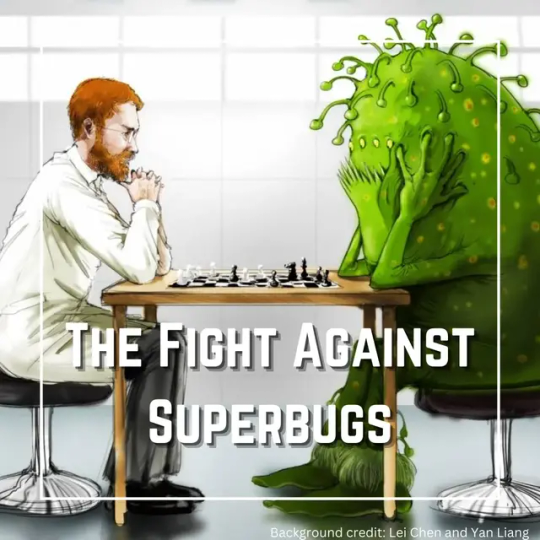

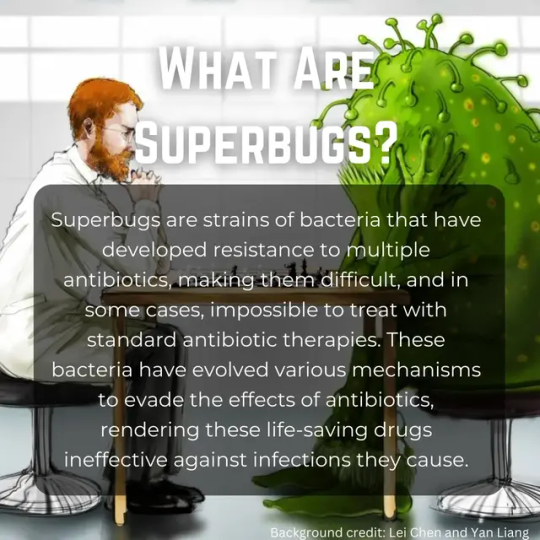
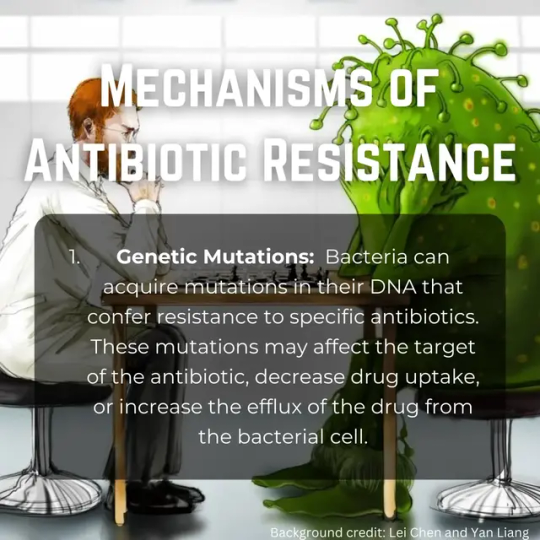

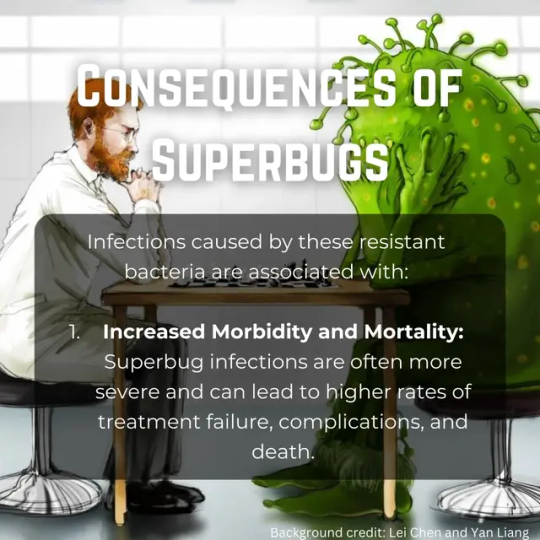
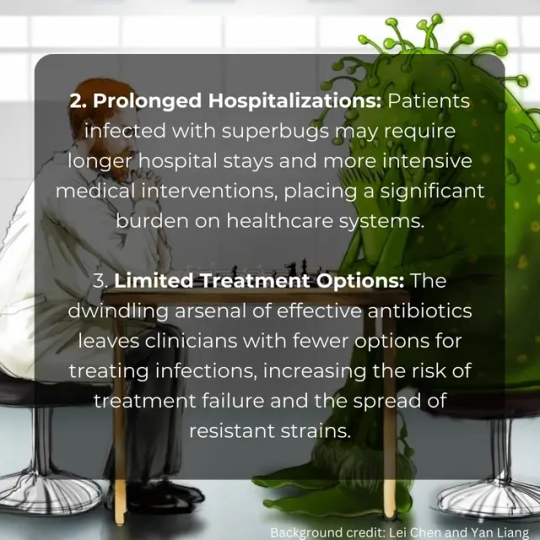

Ever heard of antibiotics not working anymore? That's the threat of superbugs! These are bacteria that have evolved to resist the drugs designed to kill them. Read through to know more. 💊🦠
#bacteria#science communication#bacteriology#microbiology#nature#microbes#mutation#superbugs#microbiome#conjugation#antibiotics#disease#medicine#biology student#biology facts#biology#biology studyblr#zoology#research scientist#research#scientist#science#science facts#education#discover#scicomm#study blog#study blr#explore#simps for science
9 notes
·
View notes
Text
Lab Tests Show Microplastics Spawn Superbugs with Antibiotic Resistance Hundreds to Thousands of Times Above What’s Normal
https://www.aol.com/microplastics-may-enable-spread-antibiotic-132509224.html
#microplastics#superbugs#pandemics#pandemic#health#science#antibiotics#resistance#ausgov#politas#auspol#tasgov#taspol#australia#fuck neoliberals#neoliberal capitalism#anthony albanese#albanese government
1 note
·
View note
Text
We have a serious pandemic going on and no one is paying attention to this as people are dying.
#black love#black positivity#black africans#black history#science#evolution#science side of tumblr#superbugs#pandemic#lack of biodiversity
6 notes
·
View notes
Text
I am fighting antimicrobial resistance!
We recently discovered a completely new way to fight bacteria. I now use it to reverse the resistance in untreatable bacteria. I explain more in a short video that I made for the World Antimicrobial Awareness Week that is just behind the corner.

Don't want to handle Twitter? (I do not blame you! Tumbrl is a much better place.) Directly to the video on my YouTube channel here: https://www.youtube.com/watch?v=UkLZSnXZPAY
#antimicrobial#resistance#amr#fight#waaw#waaw2023#science#women in science#cool science#achievement#I am fighting#health threat#WHO#outreach#original content#superbugs
6 notes
·
View notes
Text
I always knew our fungal overlords—responsible, technically, for all life on earth—would eventually get tired of our shit. #climatechange
“Hurricanes are pulling entombed fungi from beneath the earth, showering the air with potentially deadly mold.”
4 notes
·
View notes
Text
𝐀𝐈 𝐈𝐧𝐯𝐞𝐧𝐭𝐬 𝐚 𝐍𝐞𝐰 𝐀𝐧𝐭𝐢𝐛𝐢𝐨𝐭𝐢𝐜 ( 𝐢𝐧 𝐡𝐨𝐮𝐫𝐬 )
In May 2025, scientists used AI to design an entirely new antibiotic to fight a deadly superbug. It took hours—not years—and it's showing real results in lab tests.
Watch https://youtube.com/shorts/24EtDCpMil0
If AI could cure superbugs, would you trust it? Comment if we need more checks.
#AIDrugDiscovery#DeepTech2025#FraoulaReports#Superbugs#MedicalAI#AIethics#BiotechBreakthrough#YouTubeShorts#HealthTech#AIinMedicine
0 notes
Text
"An international research team has found almost a million potential sources of antibiotics in the natural world.
Research published in the journal Cell by a team including Queensland University of Technology (QUT) computational biologist Associate Professor Luis Pedro Coelho has used machine learning to identify 863,498 promising antimicrobial peptides -- small molecules that can kill or inhibit the growth of infectious microbes.
The findings of the study come with a renewed global focus on combatting antimicrobial resistance (AMR) as humanity contends with the growing number of superbugs resistant to current drugs.
"There is an urgent need for new methods for antibiotic discovery," Professor Coelho, a researcher at the QUT Centre for Microbiome Research, said. The centre studies the structure and function of microbial communities from around the globe.
"It is one of the top public health threats, killing 1.27 million people each year." ...
"Using artificial intelligence to understand and harness the power of the global microbiome will hopefully drive innovative research for better public health outcomes," he said.
The team verified the machine predictions by testing 100 laboratory-made peptides against clinically significant pathogens. They found 79 disrupted bacterial membranes and 63 specifically targeted antibiotic-resistant bacteria such as Staphylococcus aureus and Escherichia coli.
"Moreover, some peptides helped to eliminate infections in mice; two in particular reduced bacteria by up to four orders of magnitude," Professor Coelho said.
In a preclinical model, tested on infected mice, treatment with these peptides produced results similar to the effects of polymyxin B -- a commercially available antibiotic which is used to treat meningitis, pneumonia, sepsis and urinary tract infections.
More than 60,000 metagenomes (a collection of genomes within a specific environment), which together contained the genetic makeup of over one million organisms, were analysed to get these results. They came from sources across the globe including marine and soil environments, and human and animal guts.
The resulting AMPSphere -- a comprehensive database comprising these novel peptides -- has been published as a publicly available, open-access resource for new antibiotic discovery.
[Note: !!! Love it. Open access research databases my beloved.]"
-via Science Daily, June 5, 2024
#superbugs#bacteria#viruses#microbiology#antibiotics#medicines#public health#peptides#medical news#antibiotic resistance#good news#hope#ai#artificial intelligence#pro ai#machine learning
188 notes
·
View notes
Text
Oyster proteins may help antibiotics kill drug-resistant bacteria. Read more: https://www.passporthealthusa.com/2025/05/new-research-shows-how-oysters-can-help-destroy-hazardous-bacteria/

0 notes
Text
Faropenem (Farocyl 300) SR Tablets: The Ultimate Solution for Resistant Bacterial Infections
A significant global concern complicating therapy is antibiotic resistance. Selecting the appropriate antibiotic is essential for a successful recovery. In severe situations, choosing the best antibiotic for resistant bacterial infections is crucial. The broad-spectrum beta-lactam antibiotic faropenem is designed to treat bacterial infections that are resistant to treatment.
Faropenem is a potent therapy option found in Aarokiyam Lifesciences’ Farocyl 300 SR Tablets. With its potent and consistent action against a variety of bacterial strains, it is one of the finest antibiotics for resistant bacterial infections.
Faropenem: What is it?
The penem class of antibiotics, which includes faropenem, is well-known for its ability to effectively combat resistant bacterial strains. It is quite versatile and works against both gram-positive and gram-negative bacteria as well as anaerobic bacteria. When other treatments are ineffective, this antibiotic is especially helpful.
How Does Faropenem (Farocyl 300) SR Tablets Work?
Stops the formation of bacterial cell walls, which stops bacteria from growing and spreading.
Effectiveness against bacteria resistant to antibiotics is ensured by its resistance to beta-lactamase enzymes.
Enables quicker and more efficient infection treatment by offering great tissue penetration and quick absorption.
Conditions Treated with Farocyl (Faropenem 300 SR Tablets)
Numerous bacterial illnesses are treated with farocyl, including:
Illnesses of the respiratory system, including chronic bronchitis and pneumonia.
Antibiotic-resistant urinary tract infections (UTIs).
Wound infections, cellulitis, and other infections of the skin and soft tissues.
Pelvic inflammatory disease and other gynaecological infections.
Infections of the ears, nose, and throat, including tonsillitis and sinusitis.
Why Choose Farocyl Over Other Antibiotics?
Extremely powerful at combating bacterial strains resistant to antibiotics, guaranteeing positive treatment results.
Makes it a safer long-term choice by reducing the chance of acquiring more antibiotic resistance.
Less harmful and easier to handle than the previous generation of carbapenem antibiotics.
Oral dosage form that is convenient and helps patients stick to their treatment plans.
A dependable remedy for several ailments, this antibiotic is among the best for resistant bacterial infections.
This is the best antibiotic for resistant bacterial infections.
FAQs
For resistant bacterial infections, why is Farocyl regarded as one of the greatest antibiotics?
Farocyl (Faropenem) works very well against anaerobic, gram-positive, and gram-negative bacteria. Additionally, it is resistant to beta-lactamase enzymes, which makes it perfect for treating infections that are resistant to antibiotics.
What distinguishes Faropenem from other antibiotics?
Faropenem works when other antibiotics don’t because it has potent bacterial-killing capabilities and broad-spectrum activity. Indeed, this is the best antibiotic for resistant bacterial infections.
Is it possible to treat respiratory infections with faropenem?
Yes, bronchitis and pneumonia are among the respiratory illnesses for which faropenem is commonly recommended. It guarantees prompt and efficient symptom alleviation.
Conclusion
Selecting the appropriate prescription is more crucial than ever due to the increase in antibiotic resistance. A reliable and efficient treatment for bacterial infections is Faropenem (Farocyl 300) SR Tablets. For the best course of treatment, consult with your doctor if you have bacterial infections often. Farocyl 300 SR Tablets is no doubt the best antibiotic for resistant bacterial infections. This medicine offers a safe, effective treatment for the best solution.
0 notes
Text
SciTech Chronicles. . . . . . . . .Feb 21st, 2025
#“Younger Dryas”#Laacher#sulfate#geochronology#recycle#nitrification#pH#f-NBD#thermoelectric#ingots#doped#efficient#superbugs#co-scientist#antibiotics#immune#Fetal#acetaminophen#plasma#CANDLE
0 notes
Text
Combating Antibiotic Resistance: A Global Health Threat

Antibiotic resistance is one of the most pressing health challenges of our time. This phenomenon occurs when bacteria evolve and develop the ability to defeat the drugs designed to kill them. As a result, common infections and minor injuries that have been treatable for decades can once again become deadly. The rise of antibiotic resistance threatens to undermine the significant medical advances made over the last century.
In this blog, we’ll get to know the causes and consequences of antibiotic resistance,
Understanding Antibiotic Resistance
Definition
Antibiotic resistance happens when bacteria change in response to the use of these medicines. These resistant bacteria are often referred to as “superbugs.” They survive exposure to antibiotics and continue to multiply, causing more harm. The resistance can occur naturally, but misuse and overuse of antibiotics in humans and animals accelerate the process.
How is it developed?
Natural Selection: Bacteria naturally evolve resistance through mutations. When exposed to antibiotics, susceptible bacteria die, while resistant ones survive and reproduce. Over time, the resistant bacteria become dominant.
Horizontal Gene Transfer: Bacteria can acquire resistance genes from other bacteria through mechanisms like conjugation, transformation, or transduction. This transfer can occur across different bacterial species, spreading resistance rapidly.
Misuse of Antibiotics: Inappropriate prescribing, not completing prescribed antibiotic courses, and using antibiotics for viral infections (like colds and flu) contribute significantly to resistance.
Agricultural Practices: The use of antibiotics in livestock to promote growth and prevent disease in healthy animals is a major factor. These practices lead to the development of resistant bacteria that can transfer to humans through food, water, and direct contact.
Global Impact

It poses a significant threat to global health, food security, and development. Its impact is felt across various sectors:
Healthcare: Infections caused by resistant bacteria are more difficult to treat, requiring longer hospital stays, more intensive care, and more expensive and toxic medications. This leads to increased morbidity and mortality.
Economy: The economic burden of antibiotic resistance is substantial. Increased healthcare costs, loss of productivity due to prolonged illness, and the need for more expensive treatments put a strain on economies worldwide.
Food Security: Antibiotic resistance affects food production and safety. Resistant bacteria can spread from animals to humans through the food chain, making it harder to treat infections from foodborne pathogens.
Global Health: The spread of resistant bacteria does not recognize borders. International travel and trade facilitate the global dissemination of superbugs, making antibiotic resistance a truly global issue that requires coordinated international action.
Strategies
Addressing antibiotic resistance requires a multifaceted approach involving individuals, healthcare providers, policymakers, and industries. Here are key strategies to combat this global health threat:
1. Rational Use of Antibiotics
Education and Awareness: Educating the public about the importance of using antibiotics only when prescribed by a healthcare professional is crucial. Awareness campaigns can help reduce the misuse of antibiotics.
Stewardship Programs: Healthcare facilities should implement antibiotic stewardship programs to ensure that antibiotics are prescribed only when necessary and that the right
antibiotic is chosen for the right duration. These programs can help optimize antibiotic use and reduce the emergence of resistant bacteria.
2. Improved Infection Prevention and Control
Hygiene and Sanitation: Good hygiene practices, such as regular handwashing, can prevent the spread of infections in both healthcare settings and the community. Improved sanitation and access to clean water are also critical in reducing infection rates.
Vaccination: Vaccines can reduce the need for antibiotics by preventing bacterial infections. Expanding vaccination coverage, especially in low- and middle-income countries, can play a significant role.
Infection Control Measures: Hospitals and healthcare facilities should implement strict infection control measures, including the use of personal protective equipment (PPE), sterilization of medical instruments, and isolation of patients with resistant infections.
3. Surveillance and Research
Monitoring and Reporting: Establishing robust surveillance systems to monitor antibiotic use and resistance patterns is essential. This data can inform public health strategies and guide the development of targeted interventions.
Research and Development: Investment in research to develop new antibiotics, alternative treatments, and rapid diagnostic tests is critical. Encouraging innovation and supporting scientific research can help stay ahead of evolving bacterial resistance.
4. Policy and Regulation

Regulatory Measures: Governments should implement and enforce regulations to control the sale and use of antibiotics. This includes restricting over-the-counter sales and ensuring that antibiotics are prescribed only by qualified healthcare professionals.
Agricultural Practices: Policies should promote the responsible use of antibiotics in agriculture. This involves banning the use of antibiotics for growth promotion and implementing guidelines for their therapeutic use in animals.
International Cooperation:This is a global issue that requires international collaboration. Countries should work together to share data, resources, and best practices. Global initiatives, such as the World Health Organization’s Global Action Plan on Antimicrobial Resistance, provide a framework for coordinated action.
The Role of Individuals
Every individual has a role to play in the fight against antibiotic resistance. Here are some steps you can take:
Use Antibiotics Wisely: Only take antibiotics when prescribed by a healthcare professional. Follow the prescribed dosage and complete the entire course, even if you feel better.
Practice Good Hygiene: Regular handwashing, proper food handling, and maintaining cleanliness can help prevent infections and reduce the need for antibiotics.
Stay Vaccinated: Keep up-to-date with recommended vaccinations to protect yourself from infections and reduce the need for antibiotics.
Educate Others: Spread awareness about the dangers of antibiotic resistance and the importance of responsible antibiotic use within your community.
Success Stories
While antibiotic resistance remains a significant challenge, there have been notable successes in combating it:
1. Sweden’s Antibiotic Stewardship Program
Sweden has one of the lowest rates of antibiotic use and resistance in Europe. The country implemented a comprehensive antibiotic stewardship program that includes strict regulations on antibiotic prescriptions, extensive public awareness campaigns, and robust surveillance systems. This multifaceted approach has led to a significant reduction in antibiotic use and a decrease in resistant infections.
2. The Netherlands’ Agricultural Reforms

The Netherlands has made significant strides in reducing antibiotic use in agriculture. The country implemented strict regulations and guidelines for antibiotic use in livestock, including banning antibiotics for growth promotion and limiting their therapeutic use. As a result, antibiotic use in Dutch livestock has decreased by more than 60%, leading to a significant drop in resistant bacteria in both animals and humans.
3. The Fleming Fund
The Fleming Fund, named after Alexander Fleming, the discoverer of penicillin, is a UK aid program that supports low- and middle-income countries in tackling antibiotic resistance. The fund provides financial and technical assistance to improve laboratory capacity, enhance surveillance systems, and strengthen national action plans. This initiative has helped many countries build the infrastructure needed to combat antibiotic resistance effectively.
Conclusion
Antibiotic resistance is a formidable global health threat that requires urgent and coordinated action. By understanding the causes , implementing effective strategies, and fostering international collaboration, we can combat this challenge and protect public health. We can preserve the effectiveness of antibiotics for future generations and ensure a healthier, more resilient world.
In this blog, we have explored the rise of antibiotic resistance, its global impact, and the strategies needed to combat it. By embracing responsible antibiotic use, improving infection prevention and control, investing in research and surveillance, and implementing robust policies, we can address this critical issue. Let us work together to combat antibiotic resistance and safeguard the health of people worldwide.
Did you find this article helpful? Visit more of our blogs! Business Wolf Magazine
0 notes
Video
youtube
Do you have a favourite pathogen? Dr. Jen does, admiring its dangerous yet fascinating nature.
More in our conversation with Dr Jennifer Payne, Research Scientist and Founder of STEMpals.
Watch or listen on your favourite platform: https://steampoweredshow.com
Show notes at https://steampoweredshow.com/shows/jennifer-payne
0 notes